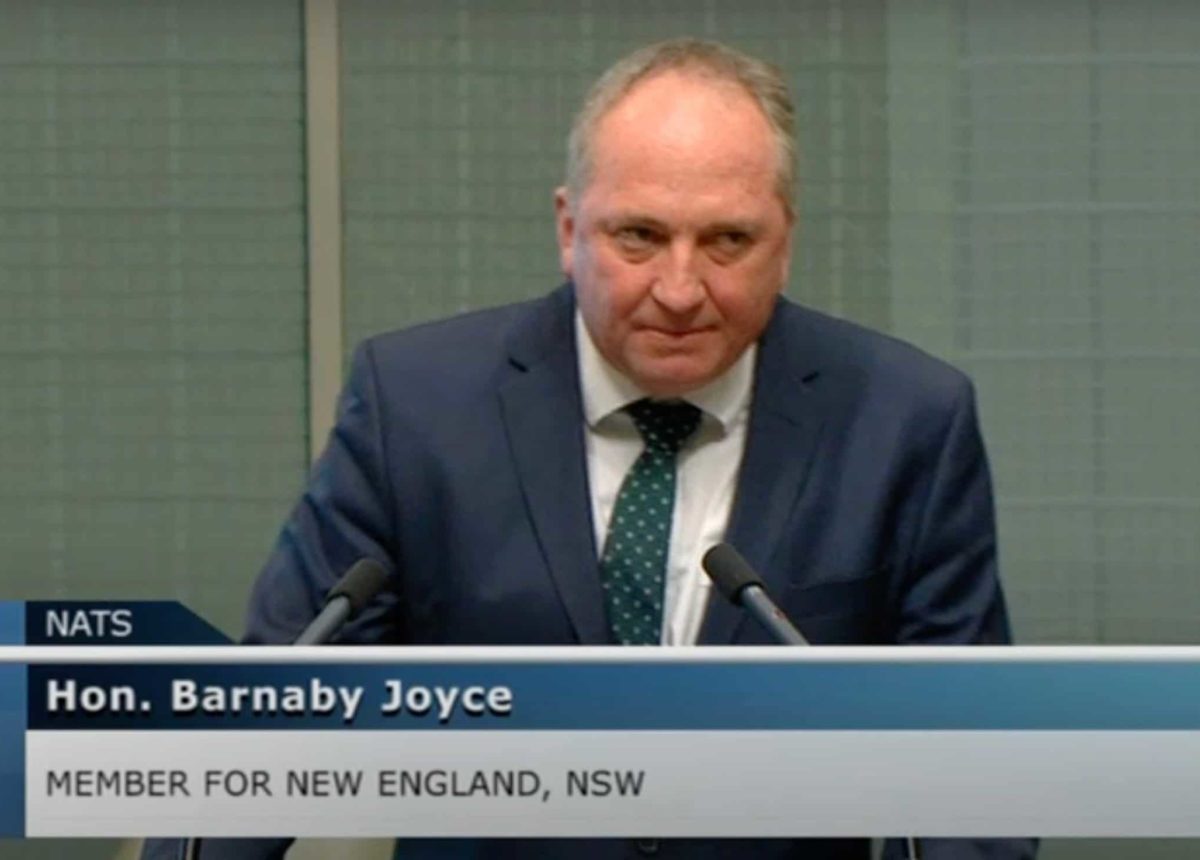As someone under thirty, it’s hard to watch a handful of our leaders refuse to listen to the most up-to-date climate science and take appropriate action to safeguard my future. But it’s even more infuriating that the key National Party members that are derailing Australia’s climate ambition represent regional electorates that can benefit from the world’s transition to clean energy and transport systems.
Let’s start with Nationals leader Barnaby Joyce and his New South Wales electorate of New England. The NSW government has announced that they will develop a New England Renewable Energy Zone (REZ) because the area has good quality wind and solar resources. According to the Australian Energy Market Operator, the New England REZ can support up to 10,900MW of new renewable energy generation, so if it was developed to its full potential it would create almost 29,000 construction and 1,800 ongoing jobs.
With the right planning and consultation, large-scale renewable energy projects can be built in a way that makes agricultural land more productive while providing a valuable second revenue stream to farmers. We see this in Dubbo where the local solar farm provides shade for grazing sheep and stimulates extra grass growth because condensation drips off the panels.
In Queensland, local federal MPs Ken O’Dowd, George Christensen and Keith Pitt have all been vocal about their opposition to implementing stronger emission reduction targets. But similarly, regional Queensland is perfectly placed to benefit from the world’s shift to a cleaner economy.
Ken O’Dowd’s electorate of Flynn will soon be home to the world’s biggest hydrogen-equipment manufacturing facility. The plant proposed just west of Gladstone will produce things like hydrogen electrolysers so that the Sunshine State can tap into its incredible renewable potential to produce renewable hydrogen for export.
If Australia takes the steps to manufacture products like renewable hydrogen, ‘green’ steel and aluminium to meet a growing global demand for these products, it would stimulate future-proof employment in industrial regions like Gladstone. In fact, research commissioned by Beyond Zero Emissions shows that building a local Renewable Energy Industry Precinct in Gladstone will power 11,000 Queensland jobs and raise local wages by $20,000 per year on average.
In George Christensen’s electorate of Dawson, in or immediately surrounding the electorate there are seven existing large-scale solar farms that are providing clean electricity to the region, with a further nine proposed in the area. Dawson also encompasses key tourism destinations, like the Whitsundays, that depend on the ongoing health of the Great Barrier Reef. Showing leadership on climate change is in the best interest of these communities.
Further south in Hinkler, which is represented by Keith Pitt, Bundaberg leads the country by being the postcode with the largest number of installed rooftop solar systems. Close-by Hervey Bay has the third highest uptake of any Australian postcode. Regional Queenslanders are leaders in the uptake of solar because utilising the impressive local sunshine to create cheap energy is a no-brainer.
The global transition to a cleaner economy means that we’ll have to adapt our export industries to stay competitive. If members of the federal Nationals really want to stand up for their electorates then they should be backing the leadership that’s already taking place locally and implementing 2030 climate targets that are in line with science.
Author: Stephanie Gray is an energy strategist at Queensland-based community group, Solar Citizens
The views and opinions expressed in this article are the author’s own, and do not necessarily reflect those held by pv magazine.
This content is protected by copyright and may not be reused. If you want to cooperate with us and would like to reuse some of our content, please contact: editors@pv-magazine.com.








By submitting this form you agree to pv magazine using your data for the purposes of publishing your comment.
Your personal data will only be disclosed or otherwise transmitted to third parties for the purposes of spam filtering or if this is necessary for technical maintenance of the website. Any other transfer to third parties will not take place unless this is justified on the basis of applicable data protection regulations or if pv magazine is legally obliged to do so.
You may revoke this consent at any time with effect for the future, in which case your personal data will be deleted immediately. Otherwise, your data will be deleted if pv magazine has processed your request or the purpose of data storage is fulfilled.
Further information on data privacy can be found in our Data Protection Policy.